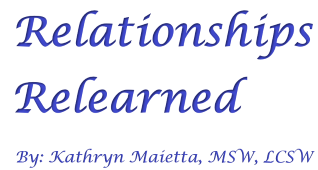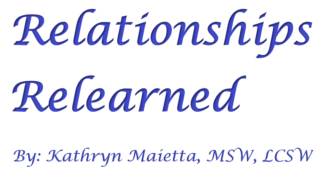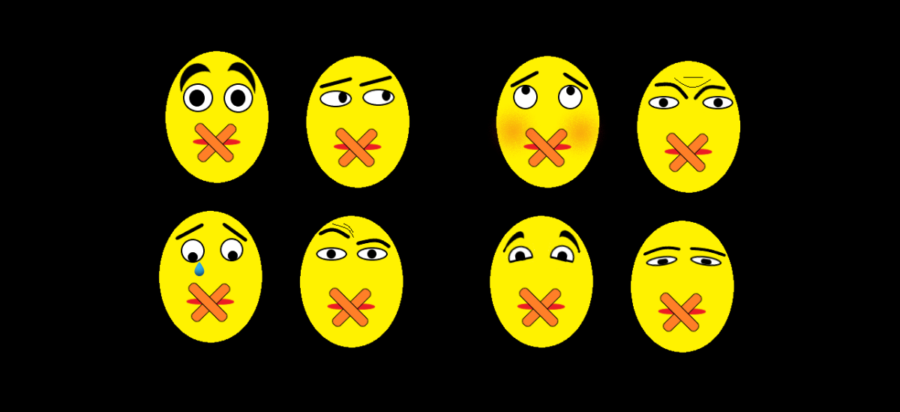Nonverbal Communications –
Have you ever been to a family gathering with a significant other, maybe a birthday party or a big Thanksgiving gathering? You look across the room at your significant other, and without a word exchanged, the other person has conveyed to you that s/he is ready to go? This is nonverbal communication.
Another example of nonverbal communication might be that you and your significant other are going to a formal gathering, maybe a wedding or a funeral. You ask your partner, “How do I look?” The response is, “You look great.” You heard the words that were said, but you keyed in on some insincerity, or maybe even sarcasm. Which will you believe, the word “great” or the tone of voice that you detected as sarcasm?
Research into Nonverbal Communication
The vast majority of what we convey through our interactions with others is innate and instinctual. It is nonverbal communication. Often, we are unaware of our participation in nonverbal communication.
Albert Mehrabian, who conducted research in the late 1960s, devised a formula to describe how the mind determines meaning. He concluded that the interpretation of a message is 10 percent verbal, 55 percent vocal and 35 percent visual. The conclusion was that 90 percent of communication is “nonverbal” in nature. See my article: Five Roadblocks to Effective Communications.
Also see: Lifesize.com – Nonverbal Communication: How Body Language & Nonverbal Cues Are Key
What Nonverbal Communication Conveys
Every day you communicate with your family, friends, colleagues and even strangers, but only a small percentage of what we communicate during each of these conversations is verbal. Nonverbal communication does the following:
- Reinforce or modify words
For example, people may nod their heads vigorously when saying “Yes” to emphasize that they agree with the other person. A shrug of the shoulders and a sad expression when saying “I’m fine, thanks” may imply that things are not really fine at all!
- Conveys emotional state
Your facial expression, your tone of voice and your body language can often tell people exactly how you feel, even if you have hardly said a word. Consider how often you have said to someone, or been asked, “Are you OK? You look a bit down.”
- Defines the relationship
If you have ever watched a couple sitting and talking you may have noticed that they tend to ‘mirror’ each other’s body language. These movements reinforce their relationship, build on their rapport and help them to feel more connected.
- Provides feedback
Smiles and nods tell someone that you are listening and that you agree with what they are saying. Hand gestures may indicate that you wish to speak. These subtle signals give information gently but clearly.
- Regulates communication
There are a number of signals that you can use to tell people you have finished speaking, or that you want a turn to speak. It could be an emphatic nod or firmly closing your lips indicating that you have nothing more to say. Skillsyouneed.com – Non-Verbal Communication
What Tone of Voice Conveys
From the sound of your voice your receiver (listener) will make judgments about your attitude toward them and the ideas you are presenting. Your receiver will judge your sincerity and credibility in part by your voice. And in turn that will affect how they respond to you and your message. Consider these components of tone of voice:
- Speaking style
If you speak in a monotone, you risk losing your audience to boredom. A monotone suggests to your listeners that you have little invested in them or their message. It also suggests you don’t really care much about your listeners.
- Volume
Changes in volume alerts your audience to the nuances of your message. Raise the volume gradually as you build toward a point. Change your volume when you are changing an idea or want to obtain someone’s attention. Please don’t increase your volume to “talk over” someone.
- Pace or Rhythm
Rhythm is the pattern of the sounds you produce. Use rhythm to carry meaning. Slow the pace to emphasize certain ideas. Quicken the pace to show excitement or humor. Pause to underscore major points or to give listeners time to absorb a complex idea.
- Timbre
Timbre is the emotional quality of your voice. It’s the attitude behind a word or a phrase. Listeners perceive a speaker’s attitude and use their perception to build comprehension.
Use timbre to enhance your meaning or express the emotion you want to create. Sometimes people speak of “radio voices”, voices that sound strong and resolute.
- Word emphasis
Depending on how you vary the vocal elements, you can give a sentence many different meanings. There can be identical words, but all end up with different meanings.
Repeat each of the following sentences aloud, each time emphasizing the underlined word.
“I didn’t tell her you were stupid.” (I wasn’t the one who said something!)
“I didn’t tell her you were stupid.” (I am emphatically making a denial.)
“I didn’t tell her you were stupid.” (I implied it.)
“I didn’t tell her you were stupid.” (I told someone else.)
“I didn’t tell her you were stupid.” (I told her someone else was stupid.)
“I didn’t tell her you were stupid.” (I told her you’re still stupid.)
“I didn’t tell her you were stupid.” (I told her something else about you.)
What Body Language Conveys
- Fidgeting
Do you shake your knee, bite your nails or play with your hair, beard or pen very noticeably as someone else talks? This may express to the sender or speaker that you are bored, nervous or disinterested.
- Facial expressions
Since facial expressions are closely tied to your emotions, they reveal what you are thinking. They are perhaps your biggest nonverbal communicators in everyday life. Excitement on your face will help get the receiver excited about your ideas. Looking around when someone is speaking shows disinterest.
- Head movements
Head movements are conveyors of communication and one of the easiest nonverbal cues to understand. Certain head movements tend to be culture-specific, such as nodding in agreement within western cultures.
- Hand gestures
Hand gestures punctuate the spoken word. Trembling hands could mean you are anxious or lying. Animated, grand hand gestures could indicate you are excited or passionate about what you are discussing.
- Body posture
Body posture can be used to determine your degree of attention or involvement during a conversation. Bad posture, like slouching, may indicate you are bored or uninterested.
- Physical distance
Physical distance between people can set the tone for the conversation. Getting extremely close or touching someone as you speak could be considered intrusive or even hostile. This is especially true during COVID times!
Conclusion
While you may listen to the words someone else says, you are more likely to believe the body language and tone of voice someone else uses. There is a big difference between these two concepts, especially when there is a discrepancy between the spoken word and the nonverbal communication you are presenting. If communication is your goal, it should be important to you to make sure your words, tone of voice and body language all match.
Quotes on Nonverbal Communication
“I can’t just tell the guys I want the ball, I have to do it with my body language.”
–LaMarcus Aldridge
“When the eyes say one thing, and the tongue another, a practiced man relies on the language of the first.”
–Ralph Waldo Emerson
With warmest regards,
To be notified of new posts like Nonverbal Communications: What Is Not Being Said Is Important, please enter your email address and click on the Subscribe button.









